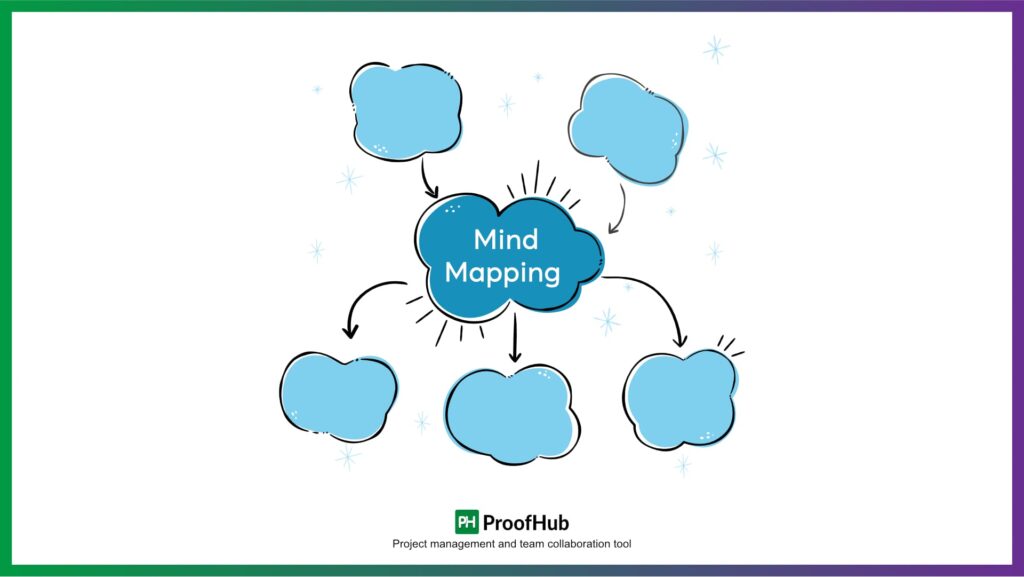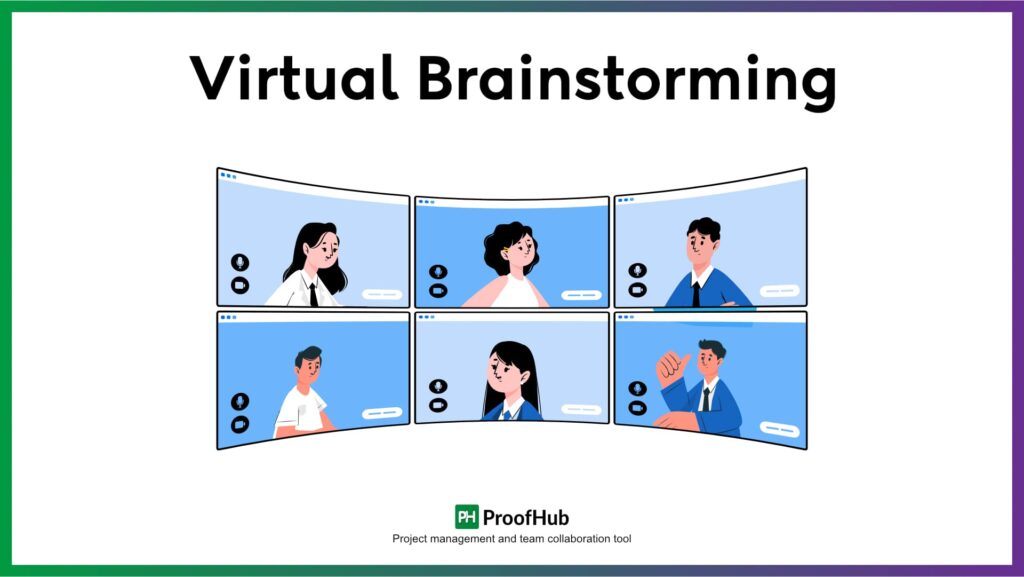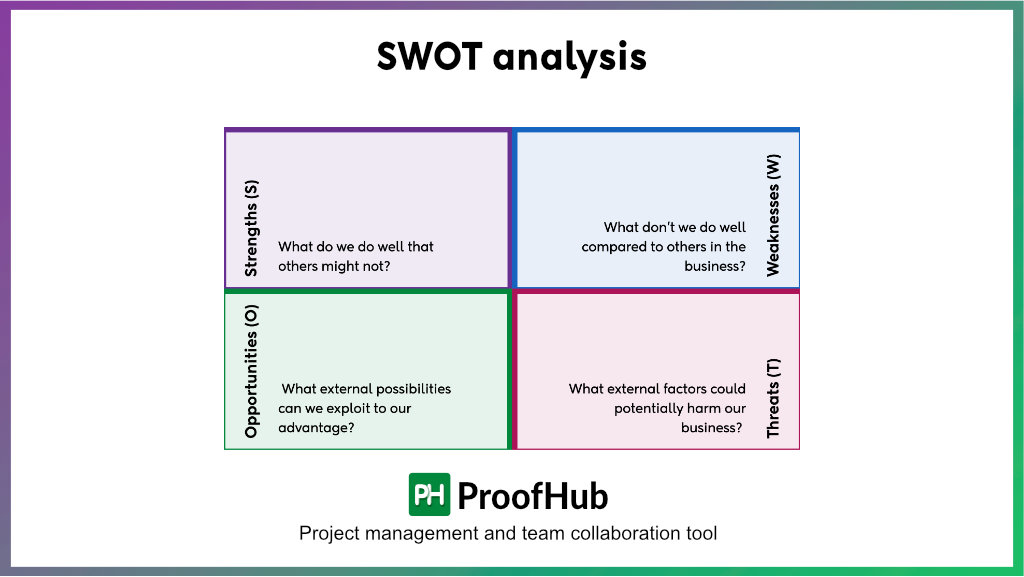Introduction
Brainstorming is the art of coming up with ideas through different techniques and methods. It’s a creative process that encourages thinking outside the box and allows people to suggest ideas freely without judgment. Whether you’re trying to solve a problem or generate new ideas for a project, different brainstorming techniques help unlock a flow of creativity that can lead to innovative solutions.
At the workplace, you can easily spot various teams such as content marketing or web development teams engrossed in brainstorming sessions to create, perform, and deliver better every day.
We totally love these beautiful words of Tom Kelly.
“Regular brainstorming is as critical to an organization as regular exercise is to your health. It creates a responsive, innovative culture.”
What is brainstorming?
Brainstorming is a creative problem-solving technique in which individuals or groups generate a large number of ideas or solutions to a problem or challenge. The key principles of brainstorming are encouraging free thinking, withholding judgment, and allowing ideas to flow without criticism.
In brainstorming sessions, the bigger the team, the better it is. After all, the main purpose of conducting such thought-provoking discussions is to gather as many ideas as possible.
Why brainstorming is important?
- Brainstorming allows participants to think freely, leading to innovative and out-of-the-box ideas.
- It fosters teamwork by bringing people together to share ideas, benefiting from diverse perspectives and expertise.
- By encouraging free thinking, brainstorming helps participants overcome mental blocks and challenges conventional thought processes.
- A successful brainstorming session results in a wide range of ideas, offering more potential solutions to a problem.
- By gathering input from multiple angles, brainstorming leads to more comprehensive and effective problem-solving.
- It makes participants feel valued by giving them a platform to voice their opinions, improving morale and buy-in.
- By considering a variety of ideas, teams can make more informed decisions, ultimately leading to better project outcomes.
Brainstorming techniques to help you deliver excellence

1. Classic Brainstorming
Classic brainstorming involves gathering a group of people in a room to shout out ideas freely. Participants are encouraged to share any idea without any judgments, the key is to generate as many ideas as possible without criticizing anyone.
You can create an effective classic brainstorming session by creating an open, non-judgmental atmosphere where all ideas are welcomed.
After generating ideas, the group refines and evaluates them, transforming the creative flow into actionable solutions.
2. Associative Brainstorming
This exercise can be done solo or by several people where they sit down at a quiet place with a pen and a paper. Now, you just need an idea, probably a single word that summarizes the idea in a nutshell.
Start writing other words that come up in your mind associated with that idea or a word. It works best when you let your mind run free and make an effort to come up with as many words as possible.
With this technique, you tend to trigger your mind with other related words that further trigger new words.
This allows your brain to connect the dots and conceive a number of new ideas. You can easily choose the duration of exercise anything from 10 minutes to an hour.
3. Brainwriting
Brainstorming allows teams to write down their ideas instead of saying them aloud. This technique allows every team member to share ideas, without any pressure of speaking up. Once everyone has written their ideas, they are discussed one by one.
In this activity, a team leader shares the topic and the team members are required to write three ideas on a piece of paper and pass it to the other member.
Now, likewise, he will jot down three ideas in coherence with the previous ideas and pass them on. Similarly, this will be repeated till the last person is not done with his input.
Brainwriting excels in quieter, more thoughtful environments where introverted team members can fully participate without the pressure to immediately speak up. This method is especially effective for projects that require deep, considered ideas rather than quick, surface-level responses.
4. Mind Mapping

Mind mapping is a visual brainstorming tool that helps organize ideas hierarchically. You start with a central idea and branch out with related thoughts. This technique is effective in breaking down complex concepts into smaller, more manageable components.
This technique is useful for those who process information visually, as it helps uncover connections between ideas, which we can not view in traditional list-making.
As branches increase, mind maps show how ideas relate to one another, enabling clearer thinking and better organization. It’s a go-to tool for breaking down large topics into manageable components and stimulating creativity in projects like content planning or product development.
5. Freestorming
Freestorming is usually thinking and writing about anything and everything that comes to your mind whenever you think of an idea.
You just need to find a quiet place and allow yourself to completely immerse yourself in freestorming. Just note down all the things – relevant or irrelevant, good or bad in your notebook or a computer.
This is a powerful brainstorming technique that lets you put down all the ‘real and raw’ ideas and then take a deep dive into an ocean of possibilities where many hidden ideas are waiting to be discovered.
6. Rapid Ideation
The rapid ideation technique is designed to maximize the number of ideas generated within a limited time. Participants are asked to produce as many ideas as possible without overthinking or critiquing them during a short, fixed period.
This time pressure pushes participants to think quickly and instinctively, often leading to highly creative, unconventional ideas. By focusing purely on quantity, rapid ideation reduces the natural tendency to self-censor, which can inhibit creativity. After the session, ideas are reviewed and filtered for quality. This technique is particularly useful for generating a broad range of solutions when time is limited.
7. Virtual Brainstorming

Virtual brainstorming is often referred to as online brainstorming and is known as the best brainstorming technique.
Today, when most of the teams are geographically scattered, more and more people are opting for this contemporary way of brainstorming. All you need is an internet connection and you are all set to brainstorm!
With the help of online collaboration tools, all the team members are virtually present at one centralized platform where they can initiate discussions.
This advancement in technology has helped us to overcome the constraints of time and space. ProofHub – an online collaboration tool that helps you get everyone associated with a project under one virtual roof.
It helps you seamlessly communicate and collaborate with all the team members. You can start important brainstorming sessions in discussions and can jot down the important pointers in the notes section.
8. Six Thinking Hats
This method was developed by Edward de Bono, it involves looking at a problem from six distinct perspectives (hats): logic, emotion, creativity, optimism, pessimism, and management. It encourages balanced thinking by forcing participants to consider all aspects of a problem.
By having participants focus on one aspect of thinking at a time, this method eliminates emotional biases and encourages balanced discussions. Teams can analyze a problem from all angles from logical data-driven views to emotional and creative perspectives.
It is beneficial for decision-making processes where various stakeholders may have different priorities, as it allows for constructive conversations that integrate diverse viewpoints systematically.
9. Round-Robin Brainstorming
The round-robin brainstorming technique is highly effective for promoting inclusivity and diversity in idea generation, especially in larger groups where quieter individuals might otherwise be overshadowed.
It ensures that every participant gets an equal opportunity to contribute. Ideas are shared one by one, in a structured order, which helps avoid the problem of certain individuals dominating the conversation. Since each person must contribute, it encourages thoughtful participation and provides a wide range of perspectives. Round-robin is ideal for teams that must ensure all members’ input is considered, promoting collaboration and preventing the “loudest voice wins” system.
10. Rolestorming
This is probably one of the most fun and engaging ways of brainstorming that has developed recently.
Here, you don’t think like yourself rather you try to put yourself in someone else’s shoes. Interestingly, it allows you to think how you would think if you were somebody else. Your boss? Or maybe your mentor?
You can spin it off by thinking like Warren Buffett, Steve Jobs, or maybe Barack Obama. With this activity, you can shed all your inhibitions and limitations and allow yourself to think like a stalwart.
They say “Fake it till you make it”. In fact, this is a great way to develop new ideas without losing your authenticity and at the same time stepping into the world of the Greats.
11. SWOT Analysis

SWOT (Strengths, Weaknesses, Opportunities, Threats) analysis is a structured technique for brainstorming. It is a useful technique for identifying internal strengths and weaknesses, as well as external opportunities and threats to a project and business.
Identifying each element makes it easier for teams to focus on important factors that can affect the business or project and make informed decisions accordingly. It brings a level of clarity and structure to brainstorming that ensures decisions are made after a thorough understanding of both internal capabilities and external challenges.
12. Starbursting
Starbursting is a question-centric brainstorming method that focuses on asking essential questions about a problem or idea: who, what, when, where, why, and how.
Rather than directly reaching the solutions, this technique encourages participants to fully explore the scope of the issue by breaking it down through inquiry. This technique is especially valuable during the early stages of project planning, as it helps define the parameters and potential challenges of a project before committing to specific ideas or actions.
13. Reverse Brainstorming
Reverse brainstorming flips the traditional brainstorming process by asking participants to think about how to cause a problem rather than solve it. By focusing on how things could go wrong, teams can identify potential flaws, risks, and obstacles they may not have considered.
Once the challenges are identified, participants can then work backward to find solutions that prevent those problems. This method is particularly effective in risk management and process improvement settings, where understanding potential pitfalls can lead to more robust and proactive planning.
Conclusion
Brainstorming is a powerful tool for unlocking creativity and solving problems. Whether you prefer classic brainstorming, mind mapping, or any other technique, there’s a technique for every scenario. By encouraging a non-judgmental environment and using the right approach, brainstorming can lead to breakthrough ideas that drive success.

